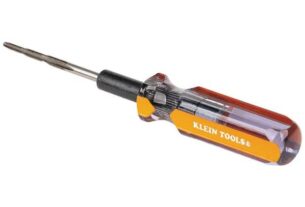Ginseng is a prized herb that has been used for centuries in traditional Chinese medicine. It’s known for its powerful health benefits and is used to treat a variety of ailments, from fatigue to high blood pressure. Ginseng is also a lucrative crop, with prices ranging from hundreds to thousands of dollars per pound. If you’re planning on harvesting ginseng, having the right tools is crucial. In this article, we’ll discuss everything you need to know about ginseng digging tools.
What are Ginseng Digging Tools?
Ginseng digging tools are specialized equipment designed for harvesting ginseng roots. They come in different types and sizes, each with its own unique features. The most common types of ginseng digging tools include:
1. Spading Forks
Spading forks are long-handled tools with four sharp tines at the end. They are useful for digging up large clumps of soil and breaking it apart to expose the ginseng roots.
2. Garden Hoes
Garden hoes have a flat blade that is slightly curved and sharpened on one side. They’re ideal for loosening soil around the roots and cutting through small roots that may be tangled around the main root.
3. Mattocks
Mattocks are similar to garden hoes but have two blades instead of one. One blade is flat and used for chopping while the other is pointed and used for prying.
4. Trowels
Trowels are hand-held digging tools with a pointed end and a flat blade. They’re ideal for digging up small or fragile roots without damaging them.
How to Choose the Right Ginseng Digging Tool
Choosing the right tool is essential when it comes to harvesting ginseng efficiently and effectively. Here are some factors to consider when selecting a ginseng digging tool:
1. Type of Soil
The type of soil you’ll be harvesting in will determine the type of tool you need. If the soil is hard and compacted, you’ll need a heavy-duty spading fork or mattock. If the soil is loose and sandy, a trowel or garden hoe may be sufficient.
2. Size of Roots
The size of the roots will also play a role in selecting the right tool. If the roots are small and delicate, a trowel or small garden hoe may be better suited. If the roots are large and thick, a heavy-duty spading fork or mattock will be necessary.
3. Personal Preference
Finally, personal preference should also be taken into account when selecting a ginseng digging tool. Some people may prefer a long-handled spading fork for better leverage, while others may prefer a hand-held trowel for greater precision.
Tips for Using Ginseng Digging Tools
Once you’ve selected your ginseng digging tool, here are some tips to keep in mind:
1. Be Gentle
Ginseng roots are delicate and can easily break if handled roughly. Use gentle pressure when digging around the roots to avoid damaging them.
2. Work Slowly
Take your time when harvesting ginseng to ensure that you don’t miss any roots or damage them in the process.
3. Use Proper Technique
Proper technique is essential when using ginseng digging tools. Hold the tool with both hands and use your body weight to apply pressure evenly.
4. Stay Hydrated
Harvesting ginseng can be physically demanding work, so it’s important to stay hydrated throughout the day.
Conclusion
In conclusion, choosing the right ginseng digging tool is crucial for successful harvesting. Consider factors such as soil type, root size, and personal preference when selecting a tool. Remember to be gentle, work slowly, use proper technique, and stay hydrated throughout the day. With these tips in mind, you’ll be well on your way to a successful ginseng harvest.
References:
1. https://en.wikipedia.org/wiki/Ginseng
2. https://www.growingformarket.com/articles/growing-and-harvesting-ginseng
3. https://www.almanac.com/plant/ginseng




